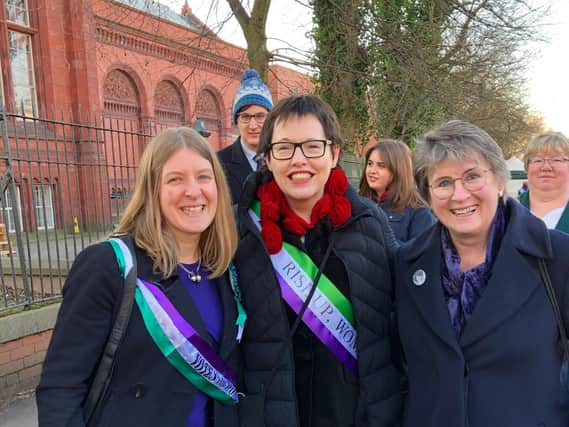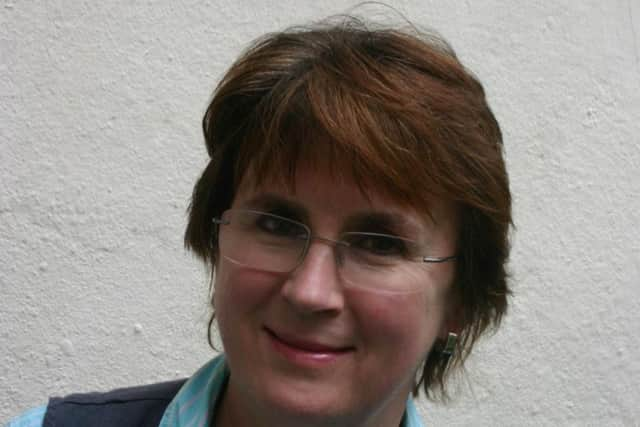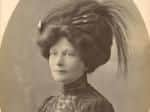A statue for Brighton suffragette Mary Clarke - our forgotten heroine


In November 2018, Brighton erected its first blue plaque for a suffragette, at 13 Victoria Road, the former home and boarding house of Minnie Turner. Three more are planned. However, there is a growing feeling that this is not enough. An appeal has been set up to fund a statue of suffragette Mary Clarke, as a symbol for our city of equality, democracy and women’s rights.
Advertisement
Hide AdAdvertisement
Hide Ad

This time last year, I had not heard of Mary Clarke, who worked in Brighton for the Women’s Social and Political Union (WSPU) from 1909 to 1910. I first saw her name in a book “Notable Sussex Women” by Helena Wojtczak. Even in this well-researched volume, Mary didn’t have a section of her own. Instead I found a reference to her buried in a paragraph about Black Friday, the day in 1910 when for six hours 300 suffragettes were beaten and sexually assaulted outside Parliament, probably on the orders of the Home Office.
Wojzcak wrote of those who died as a result of their injuries: “One of them Mary Clarke, had once been WSPU organiser for the Brighton area and was Mrs Pankhurst’s sister”. This short sentence sent me on a quest to find out more. In Mary’s obituary, Emmeline Pethick-Lawrence described her as the “first woman martyr who has gone to death for this cause”. This was true. She was the first of three women to die following Black Friday - all well before Emily Wilding Davison’s dramatic death under the King’s horse on Derby Day 1913.
Little information about Mary exists and hardly any photographs. There is no memorial to her anywhere in the country. Even the new Millicent Fawcett statue in London’s Parliament Square, which lists 69 other suffrage campaigners, does not mention her. The woman Emmeline Pankhurst mourned as her “dearest sister”, a formidable organiser, loved for her kindness and admired by fellow prisoners for her quiet strength, a brave woman who could handle “Brighton rowdies” with courtesy, simply vanished from history.
Advertisement
Hide AdAdvertisement
Hide AdBorn Mary Goulden, she was a talented decorative artist and though born to relative privilege, had no independent income to protect her. When she married John Clarke, she lost everything. Her husband was abusive and Mary lived for a time in wretched conditions. Remarkably, she left him - and spent the rest of her life working for women’s rights and social justice.


Mary Clarke lodged with Minnie Turner and from her boarding-house, helped build the WSPU operation in the South East, running the January 1910 General Election campaign. Though quiet and not physically strong, she was as brave and committed to the cause as her famous relations. Mary organised many meetings, chairing and speaking at rallies at both Hove Town Hall in 1909 and, in 1910, at the Dome. She led at least one deputation to Parliament in January 1909 - which led to her arrest - and spoke at a mass rally in Hyde Park.
She was imprisoned three times, for minor offences. Lady Constance Lytton, who met her for the first time in prison in 1909, referred to her as “exceptionally gentle and courteous in her manner” adding that “her outward calm nevertheless suggested a reserve of inward force”.
Mary died following street violence and then forcible feeding in prison. At the ‘Black Friday’ march to Parliament on 18th November 1910, she was beaten and witnessed assaults on other women by uniformed and plain-clothed police. Days later, with Minnie Turner, she returned to London to march against police tactics. Imprisoned for one month after breaking a police station window, she went on hunger strike and was forcibly fed, a brutal process which caused acute pain and often serious injury.
Advertisement
Hide AdAdvertisement
Hide AdUpon release from Holloway Prison on 23rd December 1910 Mary attended a ‘Welcome Meeting’ in London, travelled to another in Brighton, then returned to London for Christmas at her brother’s house. Two days after her release from prison, on Christmas Day 1910, she died of a brain haemorrhage. She was quietly buried in London by her devastated family. John Clarke, to whom she was still legally married, inherited her small estate of £60.
Undoubtedly, there were other women more famous in their day who perhaps achieved more in their lives. However, none can have shown more courage - or made a greater sacrifice. At Mary’s memorial service in Brighton, prominent suffragette Isabella McKeown said “Her they must not mourn in silence. They must take the torch from her and light the darkness of craft and cruelty”.
I urge the people of Brighton & Hove to ‘take up the torch’ and support this campaign to commemorate Mary and the ideals for which she gave her life - freedom, democracy and equal rights for women.
To support the appeal contact [email protected].
Cheques should be made out to “Mary Clarke Statue Appeal” and posted c/o For Our Daughters, Community Base, 113 Queens Road, Brighton BN1 3XJ.
Jean Calder is on the steering committee for the Mary Clarke statue appeal.